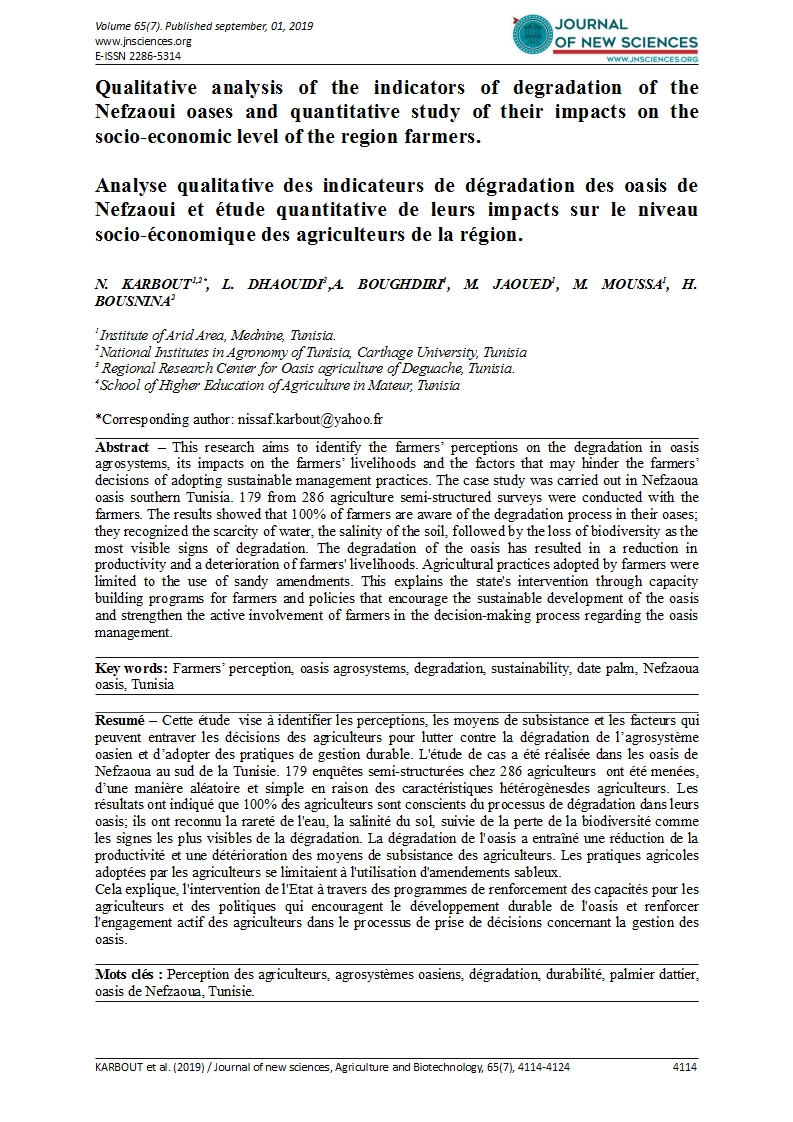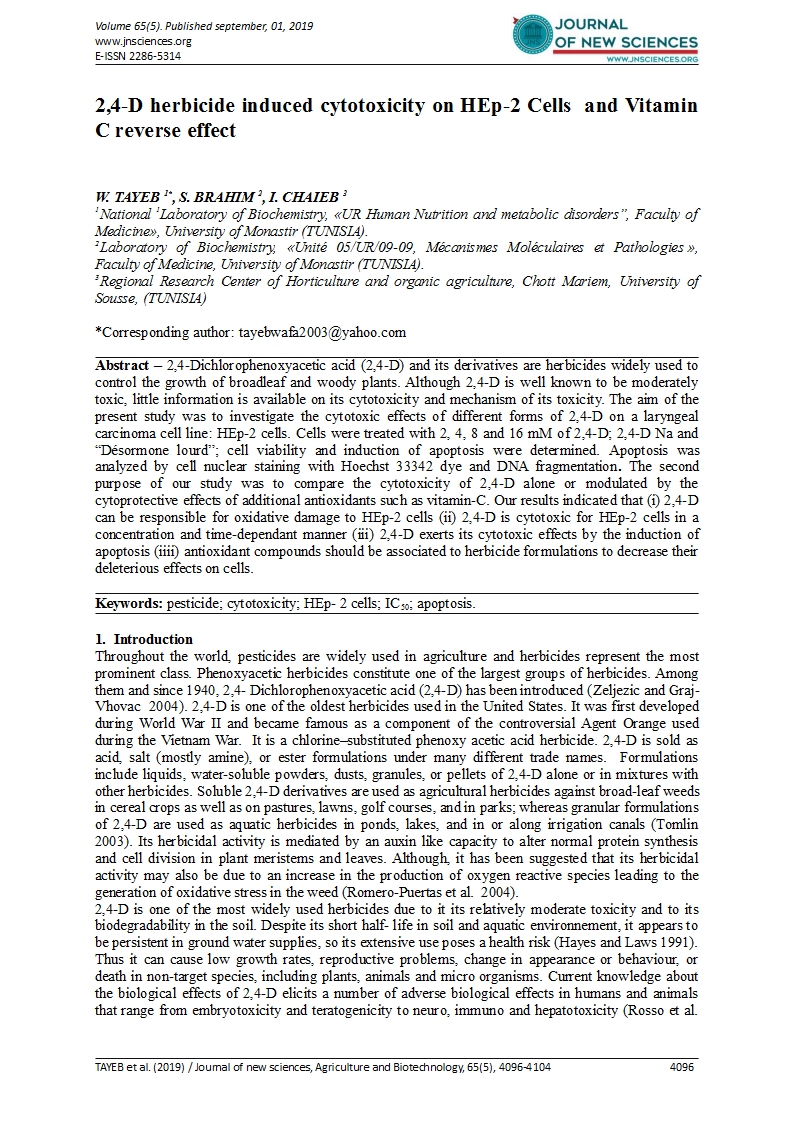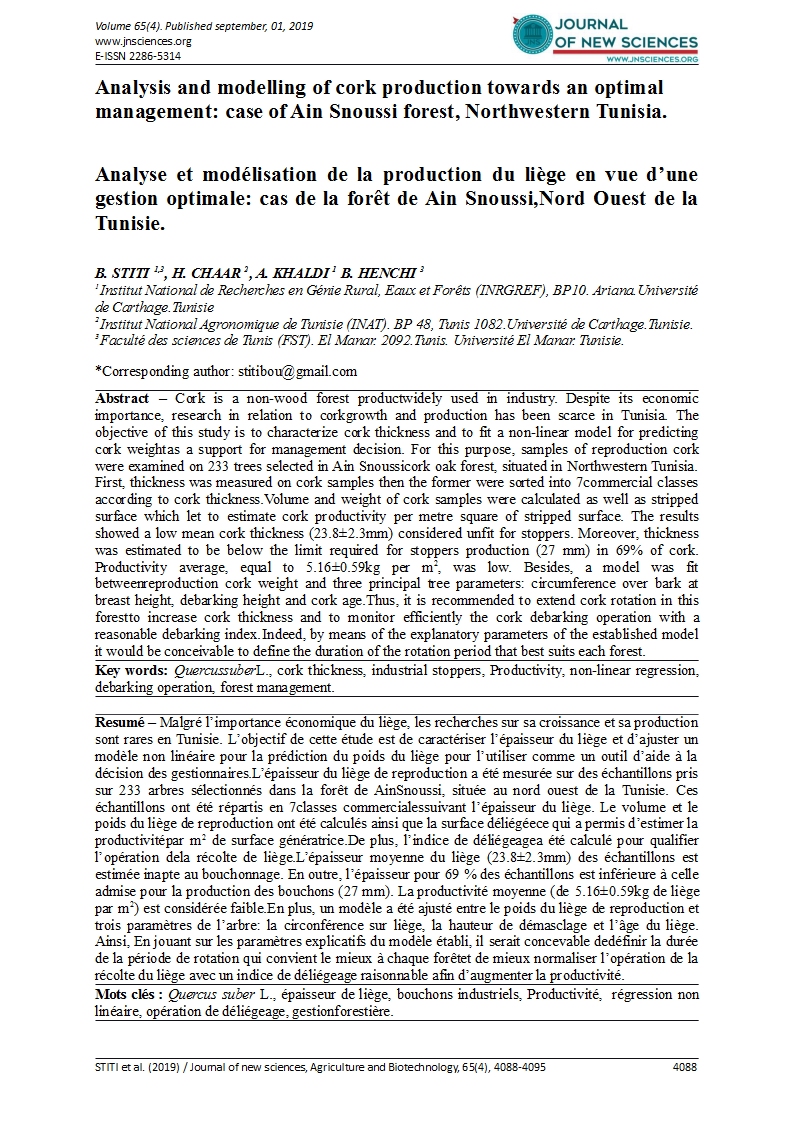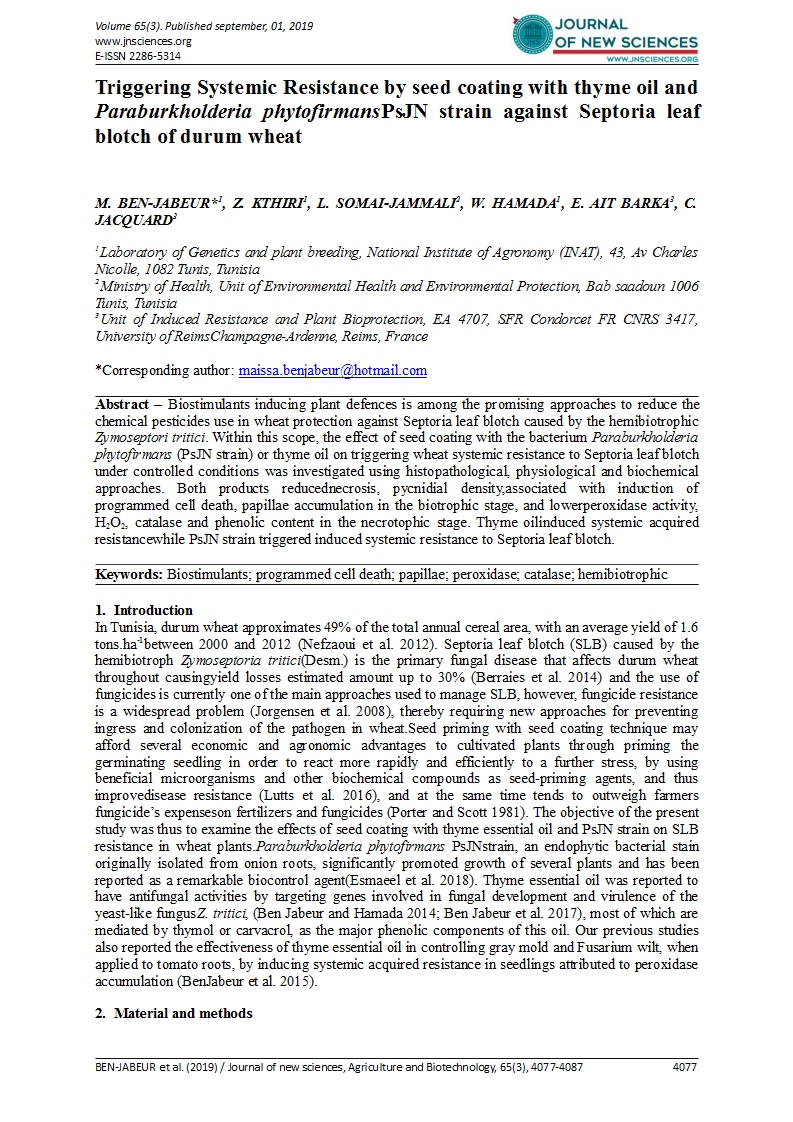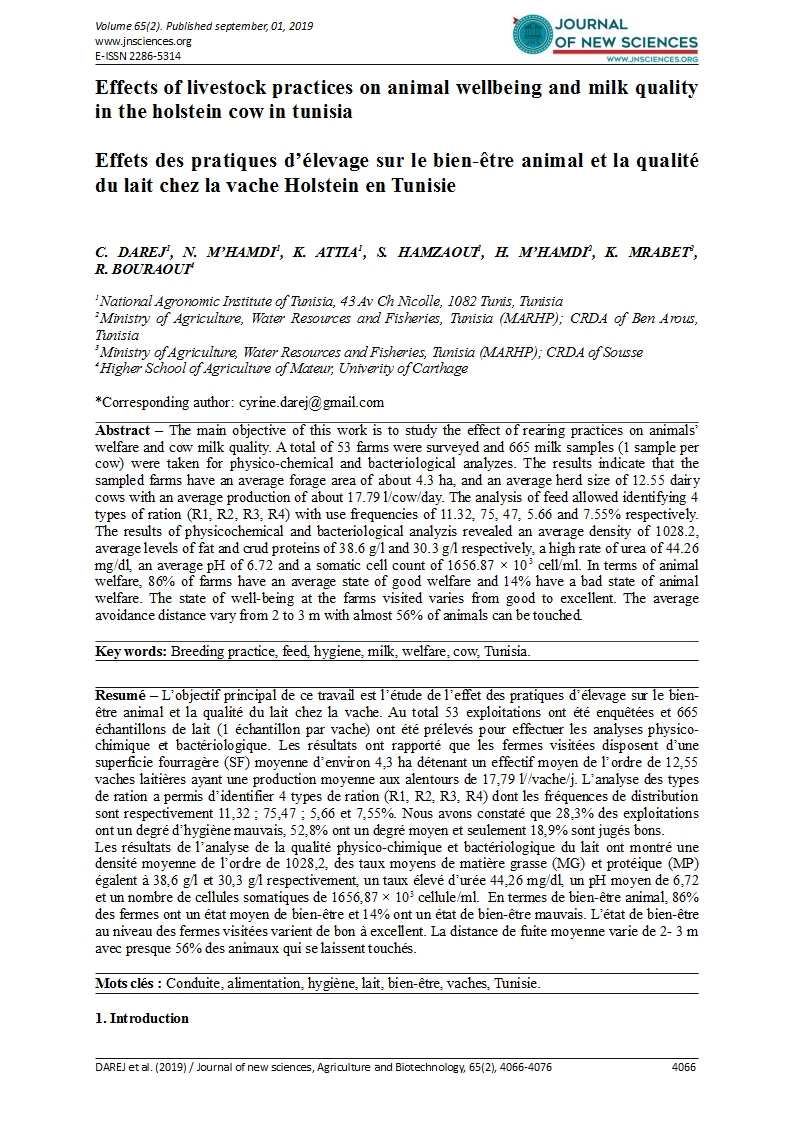- Category: Volume 65
- Hits: 4287
Evaluation of insecticidal efficiency of essential oils from Foeniculum vulgare var. dulce waste to control Tribolium castaneum Herbst 1797 (Coleoptera :Tenebrionidae) and Trogoderma granarium Everts 1898 (Coleoptera : Dermestidae) under laboratory condit
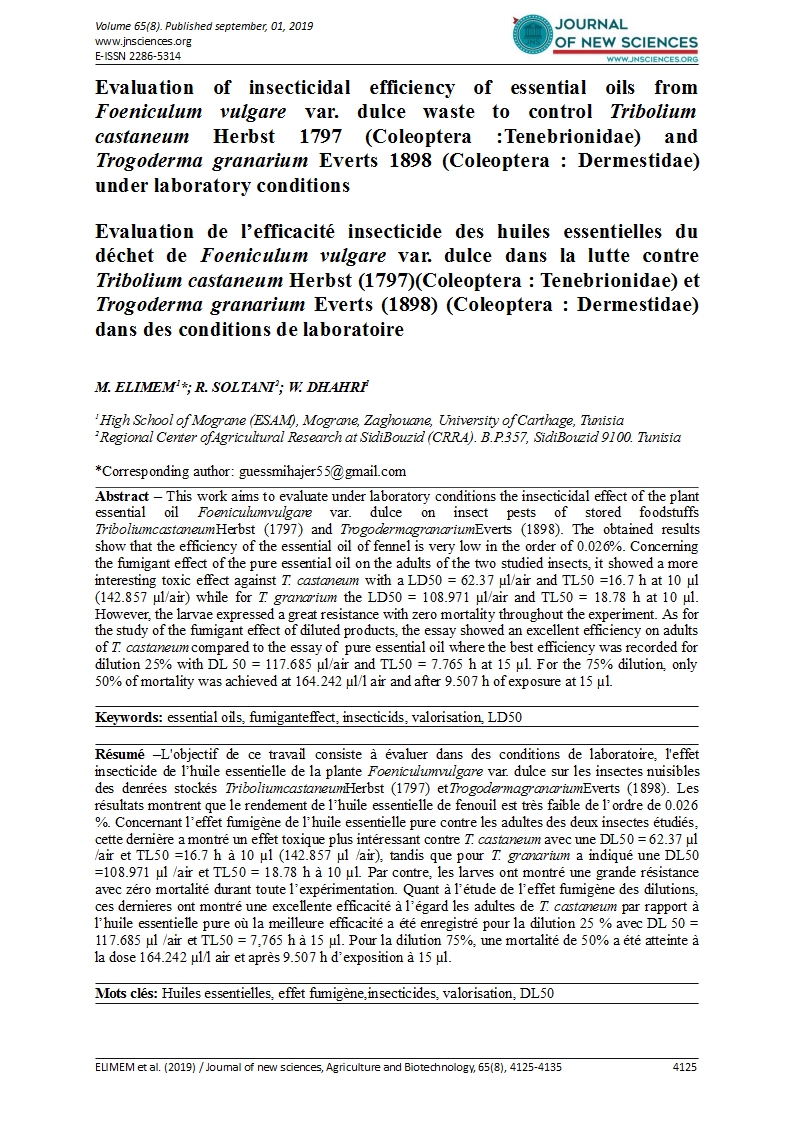
Evaluation de l’efficacité insecticide des huiles essentielles du déchet de Foeniculum vulgare var. dulce dans la lutte contre Tribolium castaneum Herbst (1797)(Coleoptera : Tenebrionidae) et Trogoderma granarium Everts (1898) (Coleoptera : Dermestidae) dans des conditions de laboratoire
M. ELIMEM1*
R. SOLTANI2
W. DHAHRI1
1High School of Mograne (ESAM), Mograne, Zaghouane, University of Carthage, Tunisia
2Regional Center ofAgricultural Research at SidiBouzid (CRRA). B.P.357, SidiBouzid 9100. Tunisia
Abstract – This work aims to evaluate under laboratory conditions the insecticidal effect of the plant essential oil Foeniculumvulgare var. dulce on insect pests of stored foodstuffs TriboliumcastaneumHerbst (1797) and TrogodermagranariumEverts (1898). The obtained results show that the efficiency of the essential oil of fennel is very low in the order of 0.026%. Concerning the fumigant effect of the pure essential oil on the adults of the two studied insects, it showed a more interesting toxic effect against T. castaneum with a LD50 = 62.37 µl/air and TL50 =16.7 h at 10 µl (142.857 µl/air) while for T. granarium the LD50 = 108.971 µl/air and TL50 = 18.78 h at 10 µl. However, the larvae expressed a great resistance with zero mortality throughout the experiment. As for the study of the fumigant effect of diluted products, the essay showed an excellent efficiency on adults of T. castaneum compared to the essay of pure essential oil where the best efficiency was recorded for dilution 25% with DL 50 = 117.685 µl/air and TL50 = 7.765 h at 15 µl. For the 75% dilution, only 50% of mortality was achieved at 164.242 µl/l air and after 9.507 h of exposure at 15 µl.
Keywords: essential oils, fumiganteffect, insecticids, valorisation, LD50

